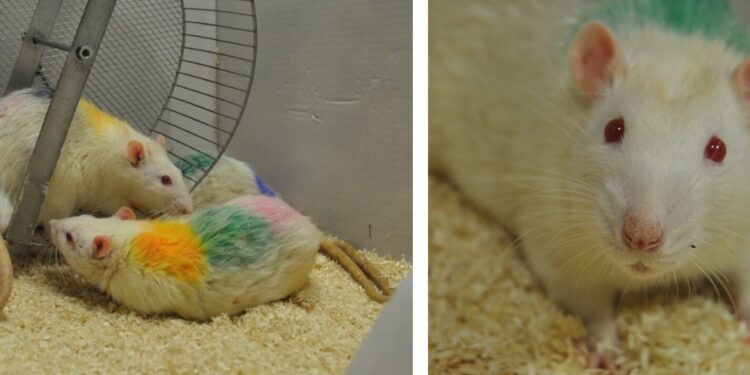ELTE researchers observed various patterns of dominance and coexistence, challenging preconceptions about rats and potentially human-like social interactions. In some cases, hierarchies only stabilized after numerous conflicts, while peaceful cohabitation was the norm in other scenarios. These dynamics were significantly influenced by the composition and reorganization of rat groups, highlighting the profound impact of the social environment on behavior. Credit: Department of Biological Physics at ELTE Eötvös Loránd University
The social behaviors of the Rattus norvegicus, commonly known as the Norway rat, are much more complex than previously thought, according to a team of researchers from ELTE Eötvös Loránd University.
Their pioneering study is published in the journal Scientific reports. This discovery not only deepens our understanding of rat social structures, but also implies important lessons for psychiatric drug development.
The biological properties of rats bear far greater similarities to those of human cells and organs than most people would expect. In simplified terms, almost 90% of the genes of humans and rats share significant similarities.
The rats were color-coded so the automated system could track them 24 hours a day for eight months. ELTE researchers observed various patterns of dominance and coexistence, challenging preconceptions about rats and potentially human-like social interactions.
In some cases, hierarchies only stabilized after numerous conflicts, while peaceful cohabitation was the norm in other scenarios. These dynamics were significantly influenced by the composition and reorganization of rat groups, highlighting the profound impact of the social environment on behavior.
When rats from a hierarchical group were mixed with those from a nonhierarchical group, the result was sometimes a hierarchical group, and sometimes a peaceful group. Another unexpected finding was that there was relatively little correlation between “personality” traits defined in standard personality and social tests (commonly used in drug or behavioral research) and actual behavior observed within real groups.
This suggests that rats’ social lives, socialization, and relationships are far more complex than can be interpreted using a simple mechanism. An interesting aspect of this result is that when examining the effects of certain psychotropic drugs in animal experiments, researchers must be extremely careful in their conclusions, because the behavior of a group of rats contains paradoxes.
(A) Photo of rats with color codes for individual identification and tracking. (C) Continuous monitoring allowed the reconstruction of the use of space by each individual. The heat map shows space use by two rats over a 3-week period at the start of phase 3. Areas used only by a3 are shown in red, only by β1 in green, and areas visited by two (for example at the water level and the charger) are shown in yellow. For more information: Credit: Department of Biological Physics at ELTE Eötvös Loránd University
The Department of Biological Physics at ELTE, in collaboration with Enikő Kubinyi from the Department of Ethology, carried out this research aimed at filling the gaps.
The resulting publication is a unique work in its field, due to the enormous amount of data underlying it, the design of the experiments and the wide range of evaluation methods used. Máté Nagy played a key role in the design and execution, while Gábor Vásárhelyi developed highly innovative software solutions for visual data processing.
At the end of the experiment, the researchers made efforts to care for the animals and were delighted that they all found adoptive homes.
More information:
Máté Nagy et al, Long-term monitoring of social structure in groups of rats, Scientific reports (2024). DOI: 10.1038/s41598-024-72437-5
Provided by Eötvös Loránd University
Quote: Team discovers the complex social lives of rats, with potential implications for human psychiatry (October 9, 2024) retrieved October 9, 2024 from
This document is subject to copyright. Except for fair use for private study or research purposes, no part may be reproduced without written permission. The content is provided for informational purposes only.



